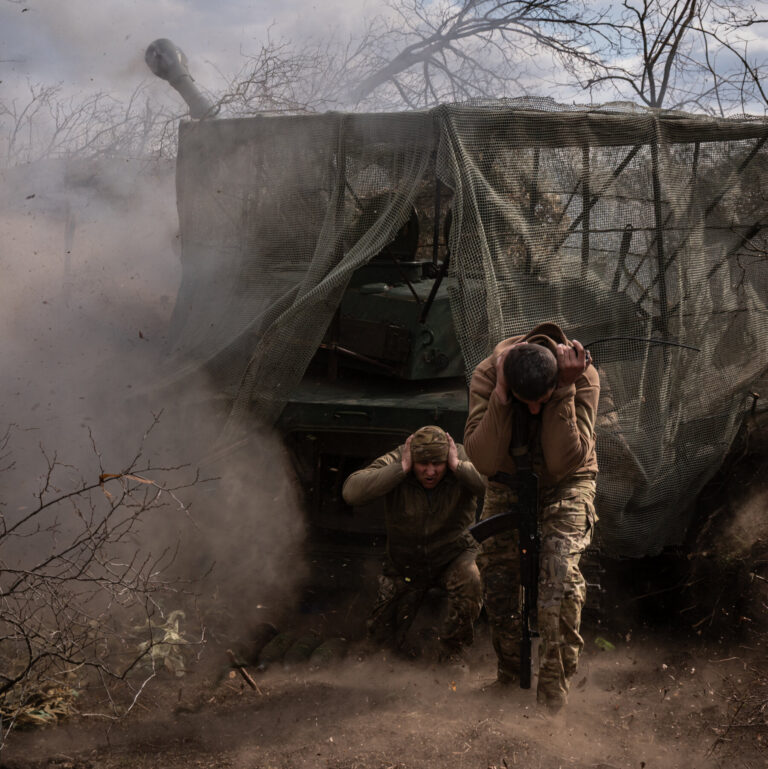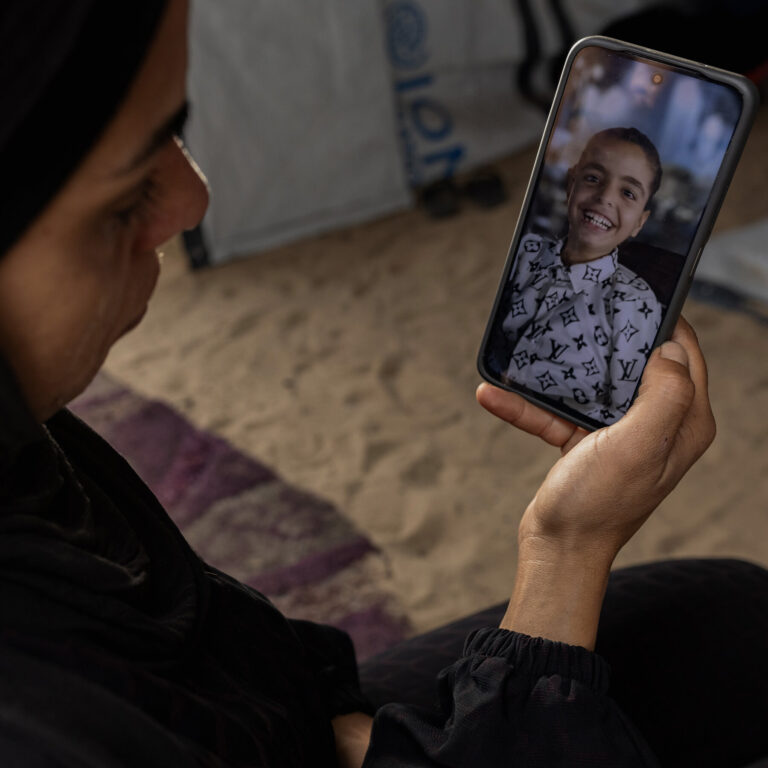Israeli soldiers and special operations police rescued four hostages from Gaza on Saturday during a heavy air and ground attack and flew them back to Israel by helicopter to be reunited with their families. The news was greeted with jubilation in Israel, where anxieties over the fate of around 120 remaining prisoners have grown after eight months of war.
Residents in the town of Nuseirat, where the hostages were held, reported intense shelling during the rescue operation. Khalil al-Daqran, an official at a hospital in the city, told reporters that dozens of Palestinians had been killed and that the hospital's wards and corridors were full of wounded.
Rear Admiral Daniel Hagari, an Israeli military spokesman, told reporters that the rescue mission occurred around 11 a.m. Saturday, when forces located the four hostages in two separate buildings where they were being held by Hamas militants. He said Israeli forces came under enemy fire but managed to extract the hostages with two helicopters. A special forces police officer is dead.
The freed hostages – Noa Argamani, 26, Almog Meir Jan, 22, Andrey Kozlov, 27, and Shlomi Ziv, 41 – were kidnapped by Palestinian militants from the Nova music festival during the Hamas-led attack on October 7, when approximately 1,200 people have been killed in Israel and 250 taken hostage, Israel says. All four were in good medical condition and were transferred to a hospital in Israel for further tests, Israeli authorities said in a statement.
The fate of the hostages has been a source of intense political pressure on Israeli Prime Minister Benjamin Netanyahu, amid broader criticism that his government, for reasons of its own, is in no rush to end the conflict or address the question of who should govern Gaza after the war.
After the hostages were released, Benny Gantz, a member of Netanyahu's war cabinet who has threatened to resign over Netanyahu's refusal to talk about a post-war plan for Gaza, indefinitely postponed a press conference scheduled for Saturday evening, citing “recent events. “
Mr. Hagari, the Israeli military spokesman, told Israeli Air
The force struck Nuseirat during the rescue to allow Israeli forces to extract the hostages safely.
“This was a mission in the heart of a civilian neighborhood, where Hamas had intentionally hidden among houses where there were civilians and armed militants guarding the hostages,” Hagari said.
Videos showed people running for cover as bombs rained down. After the airstrikes, roads were so clogged with rubble that ambulances and emergency services in central Gaza were unable to respond to many calls to transport the wounded to hospitals, Gaza's Health Ministry said.
A video from inside Al Aqsa Martyrs' Hospital, near Nuseirat, shared by the ministry, showed chaotic scenes as medical staff struggled to treat bloodied victims who lay side by side on the floor. Two men held up IV bags while next to them an injured person, his face bandaged, writhed under a blanket.
Reports on the number of dead and wounded varied greatly in the confusion that followed the attack. Two Gaza health officials said more than 200 people were killed in the attacks on Nuseirat, including women and children. They did not say how many of those killed were militants.
Mr. Hagari said the number of victims should be “less than 100,” based on information he has seen. Neither number could be verified.
In a Telegram post, Abu Obeida, a spokesman for Hamas' military wing, said Israel killed some hostages during Saturday's rescue mission. His claims could not be independently verified. He also suggested that Hamas take punitive measures against the remaining hostages in Gaza.
The news of the hostages' release was greeted with joy and relief throughout Israel.
Major Israeli television stations switched to live coverage of the rescue and its aftermath, breaking from the usual silent, pre-recorded Saturday programming.
Spontaneous celebrations erupted across the country and Israeli television broadcast images of the meetings. In Tel Aviv, lifeguard on the beach announced the news of the rescue to a cheering crowd of swimmers from the lifeguard tower, according to social media posts.
Ms. Argamani's abduction, in particular, has become a symbol of the brutality of the October 7 Hamas attack. In a video from the scene that day, Palestinian attackers are seen taking Ms Argamani away on a motorcycle as she cries. she asks for help and turns to her boyfriend, Avinatan Or. Her fate remains unknown.
After her rescue, Ms. Argamani spoke to Mr. Netanyahu. “I'm so excited, it's been so long since I've heard Hebrew,” she said in a recording of the call released by the prime minister's office.
In a video-recorded statement, Yaakov Argamani, Ms. Argamani's father, thanked everyone involved in securing his daughter's freedom, including Mr. Netanyahu.
“But we cannot forget that there are still 120 hostages who need to be released,” Argamani said, calling on Israelis to join a weekly demonstration in solidarity with the hostages remaining in Gaza. “We must make every effort, in every way possible, to bring them here to Israel, to their families.”
President Biden said Saturday in Paris that he welcomed “the safe rescue of four hostages who have been returned to their families in Israel,” adding: “We will not stop working until all the hostages return home and it is achieved a ceasefire, and it is essential that it happens.” Biden spoke after meeting with French President Emmanuel Macron.
Yoav Gallant, Israel's defense minister, hailed what he called a “complex operation” by Israeli soldiers, special forces and intelligence, who he said “operated with extraordinary courage under heavy fire.”
Israeli intelligence officers, Hagari said, worked for weeks trying to put together the pieces necessary for the operation to succeed. On Saturday morning, Herzi Halevi, chief of military staff and head of Israel's internal intelligence services, gave the final green light.
The Israeli police's special forces unit, Yamam, was also involved, and one of its members, Chief Inspector Arnon Zamora, was seriously wounded in combat and later died from his wounds, a spokesman for the Israeli police said. Israeli police.
There was also an American role. A team of U.S. hostage rescue officials stationed in Israel assisted in the Israeli military's efforts by providing intelligence and other support, an American official said, speaking without attribution to discuss the continuation of the operations.
The last successful raid to free hostages occurred in February, when Israeli special forces raided a building in the southern Gaza city of Rafah and freed two prisoners held by Hamas.
The first hostage to be rescued alive by Israeli security forces was Pvt. Ori Megidish, a soldier. His rescue came in late October, three weeks after the Hamas-led attack and days after Israel began a full-scale ground invasion of northern Gaza. Private Megidish, then 19, was kidnapped from the Nahal Oz military base, along Israel's border with Gaza, where she was serving as a field observer.
While the release of the hostages was cause for celebration on Saturday, it would seem an unlikely scenario for the recovery of all about 120 prisoners. That would appear to require a political solution, which is what Secretary of State Antony J. Blinken will try to put together when he travels to the Middle East in the coming days.
The secretary is expected to push for a plan that calls for a temporary ceasefire that would result in a permanent truce, a release of hostages and an eventual Israeli withdrawal from Gaza.
The trip will include stops in Egypt, Israel, Jordan and Qatar and will be Blinken's eighth trip to the region since the conflict began. In a statement on Friday, the State Department said Blinken would push for an agreement on the proposed ceasefire to “alleviate suffering in Gaza, enable a massive increase in humanitarian assistance, and allow Palestinians to return to their neighborhoods.”
Isabel Kershner AND Adam Rasgon contributed a report from Jerusalem, Yara Bayoumy from London e Michael D. Shear from Paris.





